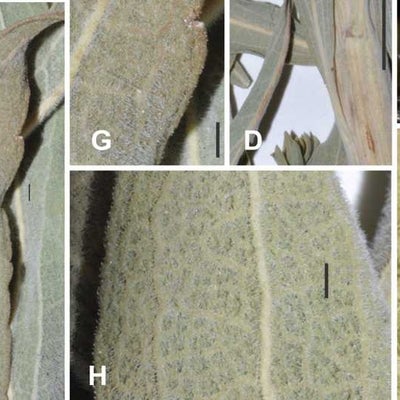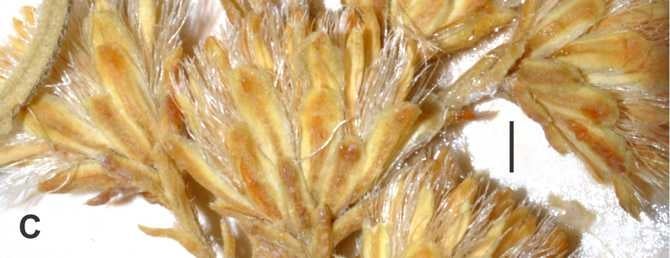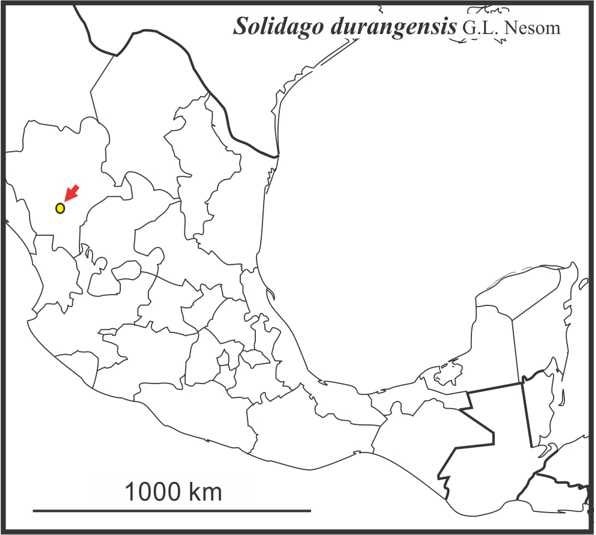Solidago gypsophila Nesom is a very rare gypsophile endemic native to small area in central Coahuila, Mexico. In the protologue, Nesom (1989) noted the similarities to S. juliae (using the synonym S. canadensis var. canescens). Semple and Lopez Laphitz (2016) included the holotype of this very rare species in a multivariate study of all species of the Tortifoliae group of subsect. Triplinerviae plus S. altissima var. gilvocanescens. It is likely most closely related to S. juliae, and S. pringlei. In the eight-taxa multivariate analysis, the holotype specimen of S. gypsophila was placed a posteriori into S. altissima var. gilvocanescens, but in a second analysis of just S. chilensis, S. juliae, S. pringlei and S. tortifolia the holotype specimens of S. gypsophila was placed into S. juliae. The single collection of S. gypsophila could not be treated as a separate a priori group. More flowering collections of the species are needed.
The leaves of S. gypsophila are similar to those of S. altissima var. gilvocanescens in being broadly lanceolate to narrowly ovate, while most species of the Tortifoliae group have lanceolate to narrowly lanceolate leaves. However, the venation is pronounced and the leaves are rather rugosa and very densely short woolly. The phyllary shape of S. gypsophila is broadly lanceolate to oblong and the involucres are only about 3 mm tall. Some individuals of S. pringlei and S. chilensis also have oblong phyllaries.
The chromosome number is unknown but involucre height suggestions it might be diploid (2n=18).
Semple, J.C. and R. Lopez Laphitz. 2016. On Solidago gypsophila and S. pringlei (Asteraceae: Astereae), rare and not so rare Mexican endemics: a multivariate study of the Tortifolia group of S. subsect. Triplinerviae. Phytoneuron 2016-29. 1-20.
Last revised 15 April 2025 by J.C. Semple
© 2025 J.C. Semple, including all photographs unless otherwise indicated
1-6. Solidago gypsophila. 1-2 and 4. Holotype, Hendrickson & Dillon 15576 LL, Coahuila, Mexico. 1. Holotype collection. 2. Leaves and venation, Semple 2018 Fig 2 F-J. 3. Inflorescences, Cole Minckley & Pinkava 3790 ASU. 4. Heads, Semple 2018 Fig.4 A-C. 4. 5. Phyllaries, C M & P 3790. 6. Range map JCS.











